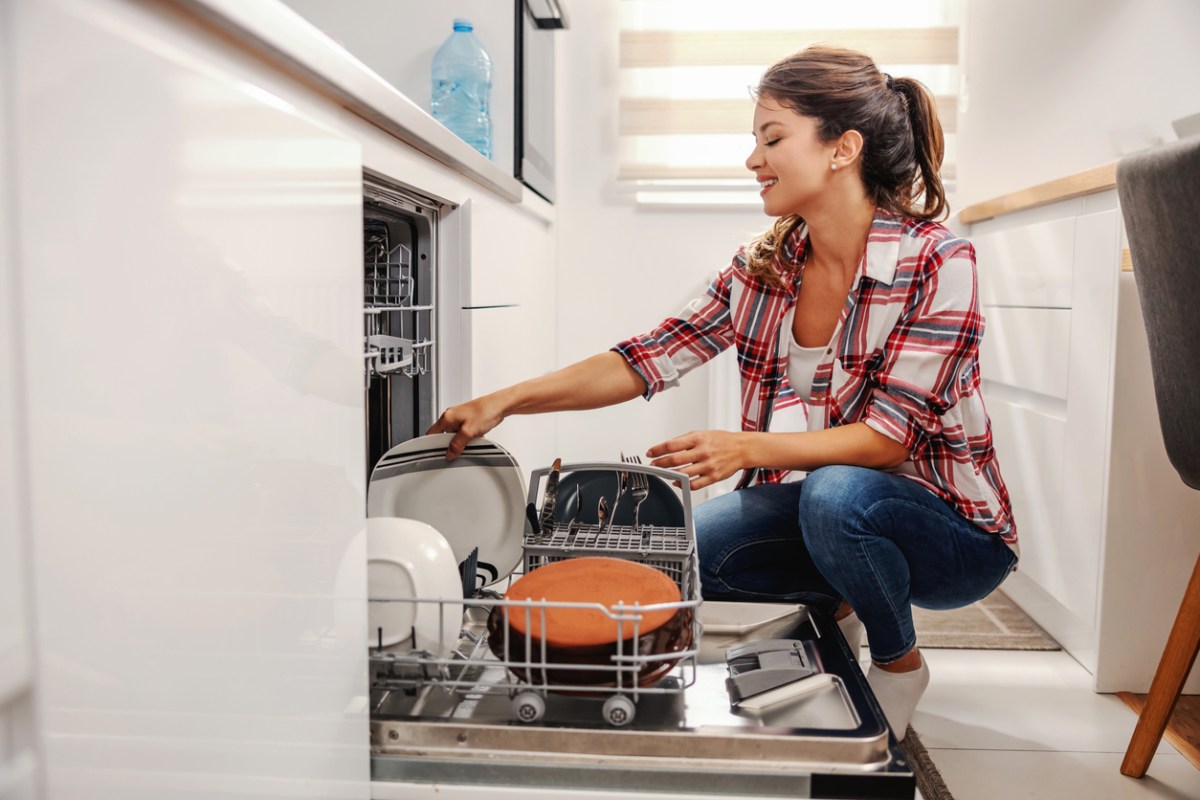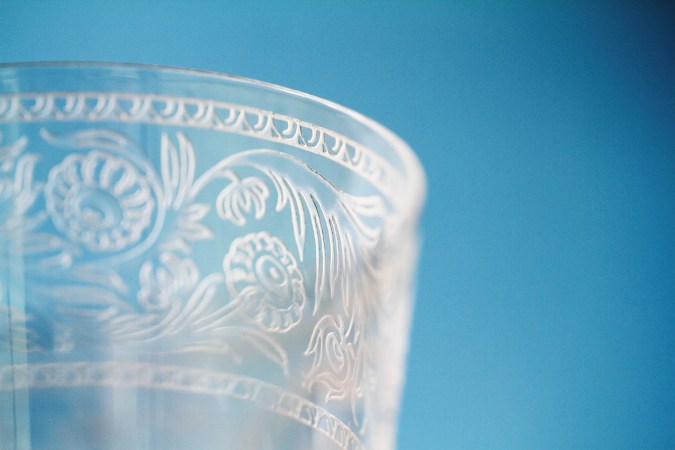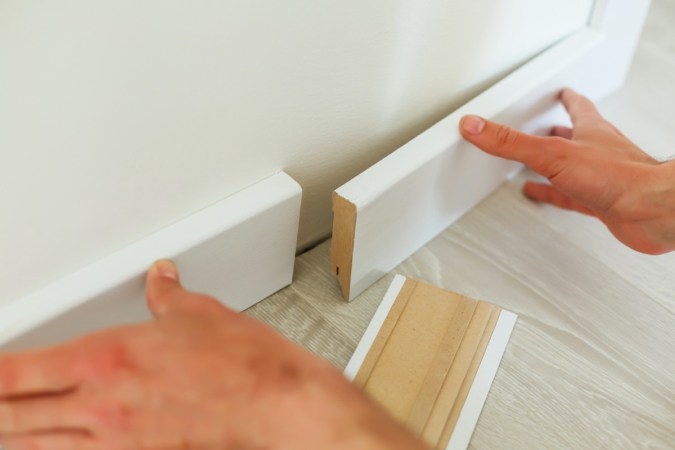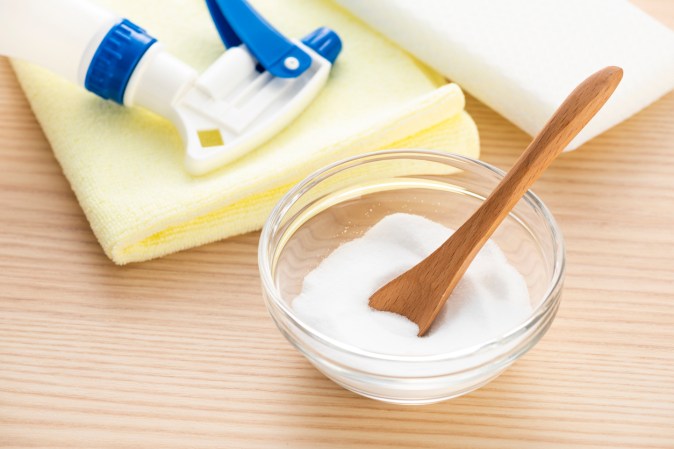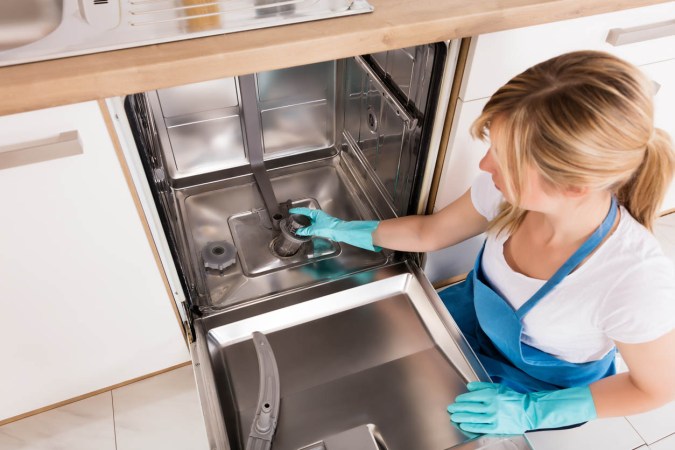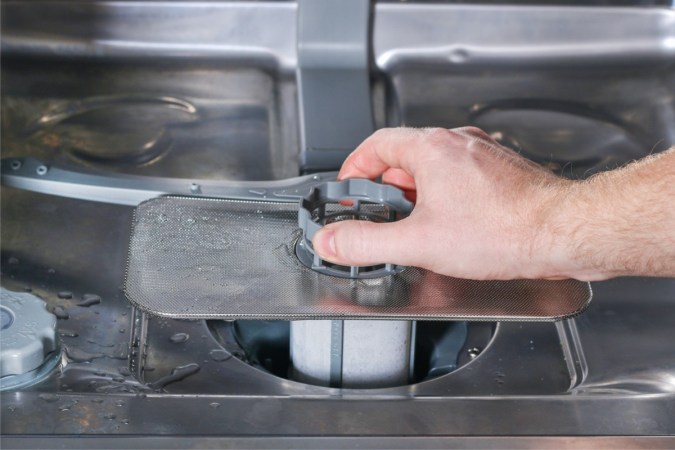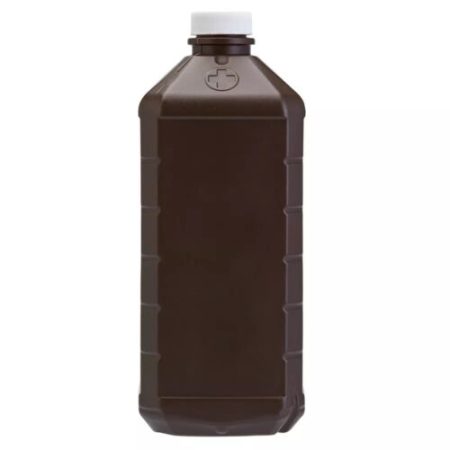We may earn revenue from the products available on this page and participate in affiliate programs. Learn More ›
Of all kitchen appliances, the dishwasher almost certainly ranks as one of the greatest. This wonderful convenience of modern life requires just the push of a button to restore a glut of dirty dishes to pristine cleanliness. On occasion, though, you might open the dishwasher post-cycle to find that some items are less clean than you’d like. In such cases, it may be that the appliance isn’t so much to blame as the person loading it.
Do you know how to properly load a dishwasher? Read on to learn how to fill the machine to the brim without sacrificing cleaning effectiveness.
Before You Begin
As you think about how to load a dishwasher properly, give careful attention to safety. Proper use of the dishwasher begins with knowing which items are safe to put in the machine. While it seems that more and more items these days are dishwasher-friendly, there remain some materials that you ought to hand-wash in the sink—namely, wood, cast iron, bronze, pewter, and leaded crystal. Additionally, it’s always a good idea to consult your dishwasher’s user guide. For example, if you’re looking for specific tips about how to load a Whirlpool dishwasher, find your hardcopy user guide or search online.
1. Forget the prerinse.

If you rinse dishes before loading them into the dishwasher, you may be wasting water and energy. Working in concert with modern dishwashers, today’s dishwasher detergents are designed to cling to food particles and separate them from their surfaces, so you only need scrape any large pieces of food into the trash and then load up the dishes. Don’t go overboard with rinsing, though; dishwasher detergent actually needs some grime to stick to. If you don’t anticipate having a full load for a few days, run a quick rinse cycle to get rid of some of the gunk and eliminate odors.
2. Put cooking utensils in the uppermost rack.
Don’t put your prep knives in the dishwasher, because the high heat and moisture can damage both the blade and the handle. Similarly, don’t put wooden utensils in the dishwasher. Large plastic and metal utensils, like spoons and spatulas, should lie flat in the top rack, perpendicular to the wire supports of the rack (if laid parallel, such items might fall through and block the spray arm). Don’t load them in the utensils basket, because they might block the spray and keep water from reaching the rest of the dishes.
3. Don’t nest your silverware.
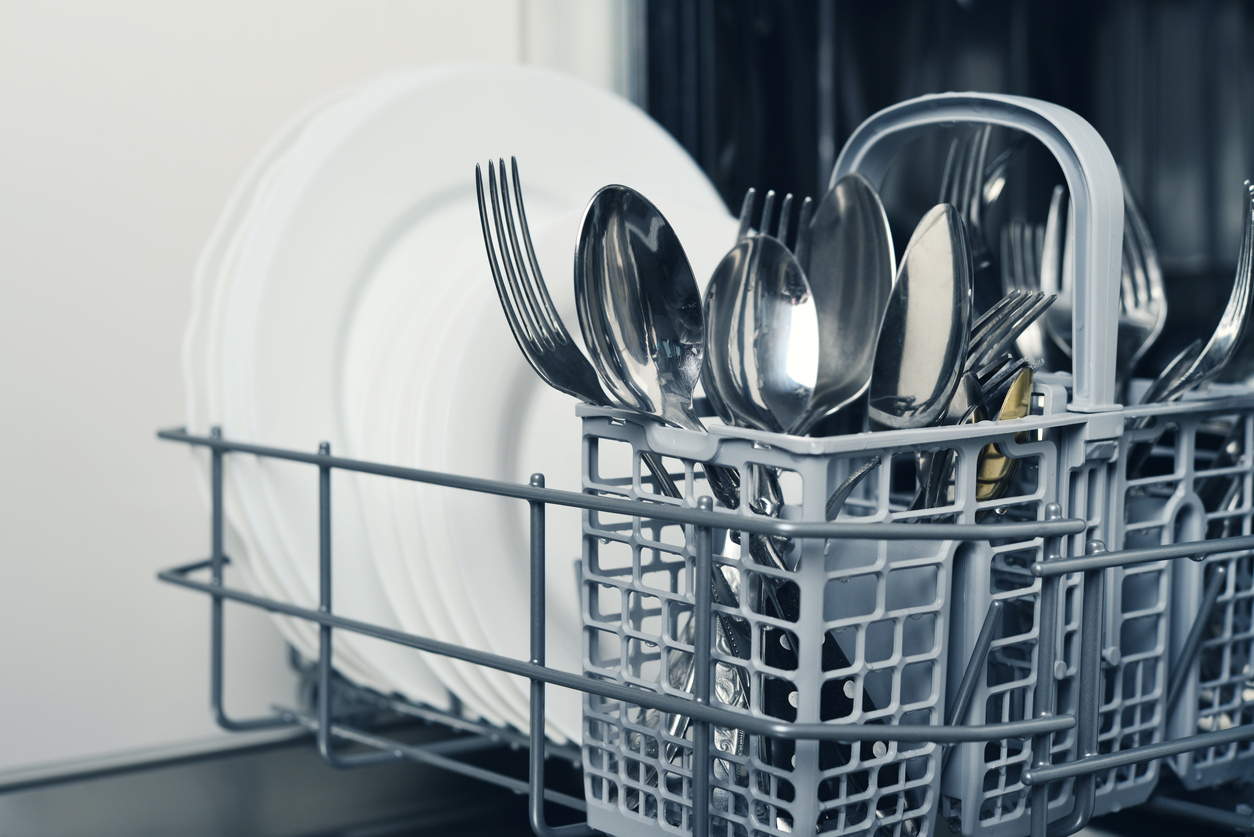
The key to proper flatware loading is to mix it up. Place some pieces handles up and some handles down. Mix forks, knives, and spoons together in the same baskets rather than grouping like items together. Mixing things up prevents a nesting effect that limits exposure to the soap and water.
Some dishwasher manufacturers, such as Samsung, GE, and Bosch, include a super-shallow third rack at the very top; in these racks, you can group like items because the rack prongs are spaced appropriately. You can also put slim cooking utensils, such as scrapers, on this rack.
Another exemption to the mix-it-up rule is the need to keep stainless steel and silver utensils separated. If those two metals collide, they’ll produce a chemical reaction that can actually pit and dent the silver. So if you’re wondering how to load silverware in a dishwasher, place it at the opposite end of the utensil basket from any stainless pieces.
4. Use the top rack as a catch-all.
Place glasses and mugs upside down along the left and right sides of the upper rack. Place them between the tines—not over the tines—to prevent the cracks and chips that can occur when they rattle or bump against each other during the course of the wash cycle.
Although it’s usually a great idea not to layer items in the dishwasher, you can indeed place bowls over the top of any long utensils placed in the top rack. The slimness of these utensils will allow spray to get through and clean the bowls.
5. Load plates and bowls in the bottom rack.
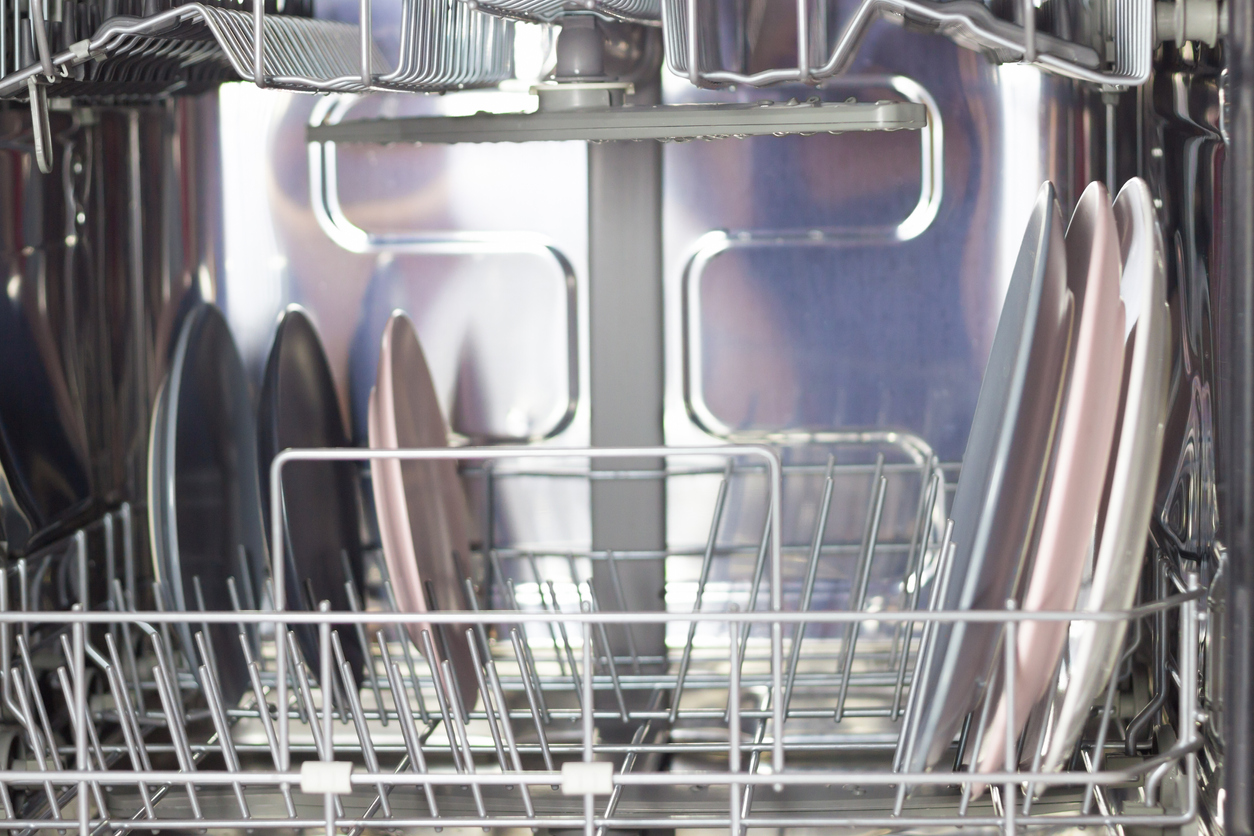
Load plates in the bottom rack, but don’t load them all in a single direction. Instead, arrange them all facing the center so the food surfaces have even access to the soap and sprayer. When loading plates, alternate between large and small sizes to promote the best water flow and the deepest clean. You can load bowls in the bottom rack or the top rack; just make sure bowls tilt downward so that the dirty portion gets plenty of spray action.
6. Pack the big stuff along the edges.
Large platters, cutting boards, cookie sheets, and casserole dishes should always be placed around the back or sides of the bottom rack, where they are less likely to impede the sprays that come from the bottom of the appliance. If these bulky items sit in the front, they can block the soap dispenser and prevent detergent from reaching the rest of the load.
7. Wash plastic containers face down.
Place larger plastic containers on the lower rack and smaller ones on top. All should face downward. Place the lids vertically, as you do plates. Unlike dishes, plasticware should be lodged firmly between dividers so that containers do not become dislodged in the course of the cycle and interfere with the wash cycle.
Final Thoughts
Just like your washing machine, a dishwasher is less effective if it’s crammed too full. If water and soap cannot freely circulate, your dishes will not get clean. Run cycles more often if necessary to avoid overcrowding. And if you’re thinking it might make more sense to do dishes by hand, the Natural Resources Defense Council would like to have a word: They say you use up to 27 gallons of water per load by hand versus as little as 3 gallons with an Energy Star-certified dishwasher.
